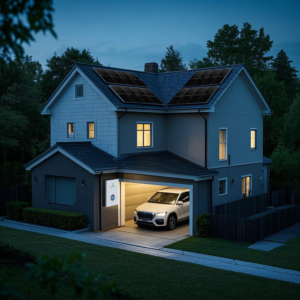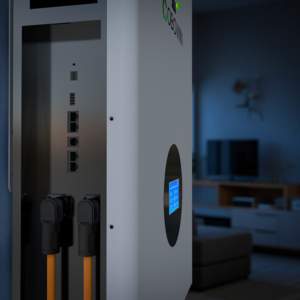Meta Description
You have many choices for home energy storage. Find the right Solar Battery type for your needs and budget. Visit us today.
Introduction
Ready to go solar? Picking the best solar battery is crucial. This blog explores various solar battery. You will learn about lithium-ion,lead-acid, and flow batteries. Each has pros and cons. Discover which storage system suits your home best. You can make a smart choice.
Understanding Your Energy Needs Before Choosing a Solar Battery!

First, think about your power use. You need a solar battery fitting your home. Many homes use 12V systems. They have cells, wires and inverters. Inverters power AC with DC. For example, 200Ah batteries store ample energy. Charge controllers keep them safe. So, 500W panels can charge them.Solar panels have many PV cells. They use silicon for power. Also check the battery’s depth of discharge. This shows how much you can use. Big solar batteries might need 10 square feet.
Lithium-Ion Solar Battery: The Industry Standard!
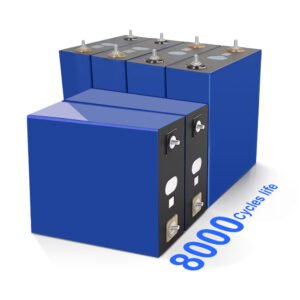
· High Energy Density
Lithium-ion batteries pack much power. They have a high energy density rating. You get more power in less space. A 1kWh lithium-ion solar or battery is compact. It stores more energy than others.This is great for small homes. Note, NMC batteries are also dense. Its voltage ranges from 3.7V to 4.2V. The BMS monitors cell voltage. The cells use a separator inside. This keeps the anode and cathode safe. Look for 95% efficiency.
· Extended Cycle Life
These batteries last a very long time. They have an extended cycle life rating. You can charge them many times. A good one offers 5000 cycles. Some reach a 10,000-cycle lifespan.That means years of use. It has a cathode and anode. A 25.6V battery has 8 cells. The cells are in series. Also, an internal resistance rating is low. Cycle life depends on usage, too. The electrolyte helps ions flow.
· Rapid Charge Rate
Lithium-ion types charge very quickly. They have a rapid charge rate. It has a high C-rate. For instance, a 1C rate is fast. You can charge them fully in hours. A 50Ah battery can charge at 50A.The charger must match this rate. Also, MPPT controllers boost charging. Battery terminals must be clean. Moreover, they use lithium iron phosphate. A 48V system is more efficient. BMS helps it charge correctly.
· Low Self-Discharge
They hold their charge well. This is called low self-discharge. A good Solar Battery loses just 2% a month. Even a 5% rate is good. Your power stays ready to use. If unused, it stays charged.A 100Ah unit will hold charge. This relates to the Coulombic efficiency, too. It uses a lithium-nickel-manganese-cobalt structure. The PCB is a vital part. The MOSFETs control current. Also, its operating temperature range is important.
· Minimal Maintenance Required
These batteries need little care. You save time and effort with these. They do not need watering, unlike lead-acid. Just keep them clean, and dry. Check connections for tightness.A 24V Solar Battery is simple. Check cell voltage every year. You should also use fuses. A fuse holder adds protection. Battery racks help organize setup. The BMS helps avoid overcharging, also. It is all solid-state technology, inside.
Lead-Acid Solar Battery: The Budget-Friendly Option!
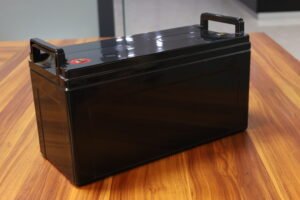
· Cost-Effective Solution
Lead-acid choices are cheaper to buy. They are a cost-effective solution initially. You save money on day one. For instance, a 6V unit is affordable. Even a large 200Ah model is budget-friendly.They use lead plates and sulfuric acid. Thus, a 100Ah battery might cost less. It is cheaper than other types. It has a lower price per watt-hour, too. Your wallet will thank you for these.
· Mature Technology Proven
These batteries use older, tested technology. They have been around for many years. It is a proven power source. So, these batteries are reliable and simple.A 12V lead-acid solar battery storage system works well. They use a simple chemical reaction inside. Their voltage is around 2.1V per cell. Many use the AGM technology today. It is a sealed type. But they are less efficient at 85%.
· Widely Available Supply
You can find these batteries almost everywhere. Any auto parts store will have them. This makes replacements easy to get. A Solar Battery shop will carry them. Many online stores sell them, too.They come in 2V, 6V, or 12V. You can get flooded types also. A flooded type needs water added. VRLA types are sealed. They have sulfuric acid with a low concentration.
· Recyclable Components Used
Lead-acid types are good for our Earth. Almost all parts can be recycled. The lead, plastic, and acid get reused. A recycling center will take them. You can get money back, too.They have a high recycle rate. Around 99% gets recycled. This reduces waste in landfills. Also, they use lead-dioxide for plates. You help keep our planet clean.
· Simple System Integration
These batteries are easy to use. They work with most solar setups. You can connect them in series or parallel. For example, a 24V system is made with two 12V batteries. A 48V system needs four.This increases the amp-hour rating, also. Charge controllers work well with them, too. You need thick cables for these. Terminals should be tight for a Solar Battery.
Flow Solar Battery: Scalability for Large-Scale Applications!
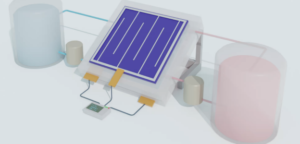
· Electrolyte Energy Storage
Flow batteries use liquid electrolytes. These are stored in separate tanks. One tank holds the positive electrolyte. Another holds the negative one. Pumps move these liquids.They flow through a cell stack. Ions pass through a membrane there. This creates an electric current. The electrolytes are often vanadium-based. Zinc-bromine is another chemistry used. You get power from this reaction. A 100kW system is powerful.
· Scalable Capacity Design
You can get more storage easily. Just add bigger electrolyte tanks. This makes them very scalable. A flow Solar Battery can be customized. You can have megawatt-hour systems.They are perfect for large buildings. The power rating depends on stacks. The membrane is a key part. These have two electrodes on each side. The electrolyte tanks are measured in liters. Capacity can be 5MWh, or more.
· Long Duration Discharge
These can provide power for hours. They offer long-duration discharge ability. This is useful during blackouts. A system can run for 10 hours. Some can even last 12 hours straight.They are great for backup power. Flow batteries beat others here. The electrolyte flow rate is adjustable. It uses a proton exchange method. Many commercial units are 250kW. A solar battery backup needs this.
· Decoupled Power, Energy
In these, power and energy are separate. The stack size sets the power rating. Tank size determines the energy stored. You choose what you need. A Solar Battery might be 2MW.You could have an 8MWh capacity. This is unique to flow type. They can discharge fully, too. The electrolytes use different oxidation states. This allows for a complete cycle. Flow rate is in liters per minute.
· Extended Operational Life
Flow batteries are very durable. They last for many years. They offer an extended operational lifespan. There is no solid material change. Parts do not wear out fast. You might get 20,000 cycles.That equals over 20 years. This makes them cost-effective, finally. Their round-trip efficiency is about 75%. The operating temperature is important also. Their high voltage depends on cell count. The electrolyte is non-flammable.
| Feature | Lithium-Ion (Li-ion) | Lead-Acid | Flow |
| Energy Density | 90-265 Wh/kg | 30-50 Wh/kg | 15-25 Wh/kg |
| Cycle Life | 5000-10,000 cycles | 500-1000 cycles | 10,000-20,000 cycles |
| Charge Rate | 0.5C-1C (1-2 hrs) | 0.1C-0.2C (5-10 hrs) | 0.2C-0.5C (2-5 hrs) |
| Self-Discharge | 2-5% per month | 5-15% per month | 1-2% per month |
| Cost/kWh | $200-$500 | $75-$200 | $300-$600 |
| Maintenance | Minimal | Regular | Moderate |
| Voltage | 3.7V-4.2V/cell | 2.1V/cell | 1.2-1.6 /cell |
Table on Solar Battery Types!
Solar Battery Installation and Integration Tips!
· Certified Installer Required
You need a trained professional for this. Only use a certified installer always. They know all safety rules. Wiring must be done correctly. A 48V system needs care. They will check your roof angle.Installers use special tools like multimeters. The mounting system is crucial, too. They connect it to your breaker box. All wires use proper conduit. A good Solar Battery install takes skill.
· Grid-Tied Systems
These systems connect to the power grid. You can sell extra power back. Your home stays connected to electricity. You need a special meter. It tracks power flow both ways. A grid-tied inverter is used.It must match the grid voltage. You might have a 240V system. These use net metering. Panels produce DC power. Then, the inverter changes it to AC. So, Solar Battery storage helps here.
· Off-Grid Configurations
These systems are not tied to the grid. You are self-reliant for power. You need a large battery bank. A 10kWh capacity works well. Panels must match your usage. An off-grid inverter is different.You should size it correctly, always. Charge controllers are very important. They regulate the voltage. You might use a 48V system. An off-grid home battery needs careful planning. You may use a backup generator.
· Hybrid Inverter Use
These inverters handle solar and batteries. They work for grid-tied, or off-grid. They manage power from many sources. A hybrid inverter is very smart. It can switch between modes.It might have a 5kW rating. You can charge batteries at night. You can also use grid power. Peak shaving is a feature. It reduces high-cost energy use. The display shows system status. Solar Battery systems use them often.
· System Monitoring Tools
These tools let you see your power. You can track energy use easily. Many have apps for your phone. Some use Wi-Fi to connect. You can see panel output. Also, it shows battery charge levels.You get alerts about problems. Data is logged every minute. Graphs show trends over time. You might see a 5% loss. Remote monitoring is a plus, also. A Solar Battery needs this.
Making the Right Solar Battery Choice for Your Business!
· Needs Assessment First
You need to start with your power needs. Think about your lights, 30 computers, and 2 AC units. Inverters then convert DC to AC power. A charge controller, rated at 60 amps, protects the system.Lithium-ion is a good choice for storage. Look at the kilowatt-hours they store. The depth of discharge, around 80%, is vital. A 48v battery might be best. It will store 240 volts of energy.It might need 500 watts of output. Ensure 90% round-trip efficiency. Check for 10,000 life cycles. Note 25°C temperature rating. The cells use nickel-manganese-cobalt. Maximum discharge current should be 100 amps.
· Budgetary Considerations
Next, you should think about your budget limit. Some storage options cost more at first. Grid-tied systems might save money later. They require a 25,000-watt inverter. They offer 98% peak efficiency. They connect to 480V AC mains power. Note 208/240V AC output voltage.Consider a 100-amp transfer switch. A hybrid inverter is flexible. Check the 5-year warranty terms. The system needs 300-amp fuse protection. It uses a CAN bus interface. Note 50dB noise level. It offers 96% energy retention. It requires 1000-volt surge protection.
· Expert Consultation Advised
Talking to solar experts is a smart move. Solid state battery types are understood by these professionals. The experts have eyes on roof angles of about 30 degrees for optimal placement.Your sunlight, measured in peak hours, is also important. Choosing the right sized 5kW inverter is super important. 60 cell panels are well known to all solar pros. It is important to understand 1000 VDC system limits. Installers use 20,000-cycle tubular gel batteries. IEC 62109 certification ensures safety.Knowing 80% DOD limits is also key. Proper 0.2C discharge rates are calculated. AGM battery use is common. Installers configure 2-string combiner boxes. Panels are mounted with 2-inch rail spacing. COBOWIN excels at this, holding over 100 patents. We guide you throughout, easily, with our trained staff.
· Long-Term Value Focus
Choose a solar battery that lasts many years. A good one holds power for 5000 cycles. Lithium iron phosphate types offer more cycles. These models offer 95% efficiency. It can handle 100 amps of output.The system uses 2/0 AWG cables. It has a 90% round trip. It works at 40°C. It recharges in 3 hours. It uses a 50-amp charge controller. It weighs 200 pounds. It needs 24 cells. Its voltage is 48 volts. It has 80% capacity. It works with MPPT technology.
· Technology Scalability Options
Good systems can grow with your business needs. Ensure you can add more panels later. Get an inverter that handles more power. A scalable setup is key. You might upgrade to 10 kilowatts.Ensure your wiring is correct. A 100-amp breaker is vital. You may add 10 more panels. You need a 60-amp charge controller. It should have 98% MPPT efficiency. It handles 1000-volt input. The inverter has 96% efficiency. It outputs 240 volts AC. It weighs 50 pounds. It has a 5-year warranty.
FAQs!
What Is The Difference Between A Solar Battery And A Regular Battery?
A Solar Battery stores energy from solar panels. It uses special cells to hold power. Regular ones are used in many different devices.
How Long Does A Solar Battery Last?
They can last many years with proper care. Most have a 10-year warranty. Some may even reach 15 or 20 years with usage.
What Is The Best Solar Battery For Off-Grid Applications?
Lithium-ion types are great for off-grid. They store much power, and last. You can use a large capacity solar panel battery for this.
Can I Add More Batteries To My Solar System Later?
Yes, you can expand later. Ensure your system can handle more. Your inverter capacity should allow this added load to your Solar Battery.
What Are Hybrid Solar Batteries?
These combine a battery and inverter. It is an all-in-one unit. This makes them simpler to install. A hybrid is compact.
Conclusion
You now know the main solar battery types. Each of them has its own benefits to homeowners. Look at your needs, your budget and what the experts say. It’s about choosing wisely to get the long-term value.
Ready to explore more? Visit COBOWINENERGY today. Find your perfect Solar Battery solution there. Make your smart energy choice.

